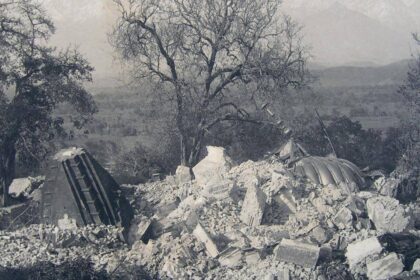Himachali Nati is a traditional folk dance form that has been passed down through generations, reflecting the spirit, joy, and traditions of the people of this northern Indian state.
Himachal Pradesh, nestled in the lap of the Himalayas, is not only known for its breathtaking landscapes but also for its rich cultural heritage.
Among the various cultural expressions that define Himachali identity, “Nati” holds a special place.
Table of Contents
Origins and History Of Himachali Nati
The roots of Himachali Nati can be traced back to ancient times when communities in the region used dance as a means of storytelling, celebration, and expression.
Over the years, these dances evolved into distinct forms, with each region and community contributing its unique style and variations to the art form.
Nati is deeply intertwined with the cultural, social, and religious fabric of Himachal Pradesh. It has been a vital part of festivals, weddings, and other significant occasions for centuries, acting as a bridge between the past and the present.
The dance form has played a crucial role in preserving the traditions and customs of the region.
Styles and Variations
Himachali Nati is not a monolithic dance form but rather a collection of diverse styles and variations. Each region and community in Himachal Pradesh has its own distinct Nati, characterized by specific steps, costumes, and music.
Some of the popular styles include Kullu Nati, Kinnauri Nati, and Shimla Nati, each with its unique charm and cultural significance.
Kullu Nati, for example, is known for its energetic and fast-paced movements. Dancers in vibrant costumes whirl and twirl to the beats of traditional instruments like the dhol and nagara. The dance is often accompanied by joyful singing, creating an atmosphere of celebration.
Kinnauri Nati, on the other hand, is marked by graceful and elegant movements. Dancers in colorful traditional attire perform intricate footwork, showcasing the cultural richness of the Kinnaur region. The music, predominantly provided by traditional instruments like the flute and drums, adds a melodious touch to the performance.
Shimla Nati, named after the capital city of Himachal Pradesh, has its own distinctive style. The dance is characterized by a mix of slow and fast movements, reflecting the cultural amalgamation that Shimla represents. The performers, adorned in elaborate costumes, bring alive the spirit of the region through their rhythmic expressions.
Costumes and Instruments
One of the striking elements of Himachali Nati is the elaborate and vibrant costumes worn by the performers. The attire varies across different styles but often includes colorful dresses, ornate jewelry, and traditional headgear.
The costumes not only add visual appeal to the performances but also carry deep cultural significance, representing the heritage and history of the communities.
Traditional musical instruments play a crucial role in accompanying the dance. The dhol, nagara, shehnai, and flute are commonly used, creating a symphony of sounds that complements the dance movements.
The rhythmic beats and melodious tunes transport the audience to a different era, connecting them to the cultural roots of Himachal Pradesh.
Preserving Heritage Of Himachali Nati
In the face of modernization and changing lifestyles, the preservation of Himachali Nati is crucial for safeguarding the cultural identity of the region. Efforts are being made by cultural organizations, artists, and the government to promote and document this traditional dance form.
Cultural festivals, workshops, and performances contribute to keeping the spirit of Nati alive among the younger generations.
The significance of Himachali Nati goes beyond entertainment; it serves as a living archive of the customs, rituals, and history of Himachal Pradesh.
Through rhythmic movements and soulful music, Nati encapsulates the essence of the state’s cultural heritage, fostering a sense of pride and belonging among the people.
Tourism and Cultural Exchange
Himachali Nati also plays a pivotal role in promoting tourism and cultural exchange. Tourists visiting Himachal Pradesh are often captivated by the vibrant and lively performances of Nati.
Cultural events and festivals showcasing this traditional dance form have become attractions in themselves, drawing visitors from around the world.
Additionally, cultural exchange programs provide a platform for Himachali artists to share their heritage with a global audience. The universal appeal of music and dance transcends language barriers, allowing Himachali Nati to serve as a cultural ambassador, fostering understanding and appreciation among diverse communities.
Conclusion
Himachali Nati stands as a testament to the resilience of cultural traditions in the face of modernization. Its enchanting rhythms and vibrant expressions continue to captivate audiences, providing a glimpse into the rich tapestry of Himachal Pradesh’s cultural heritage.
As efforts to preserve and promote this traditional dance form persist, Himachali Nati remains not just a series of dance steps but a living, breathing embodiment of the spirit and traditions of the people who call this picturesque state home.




